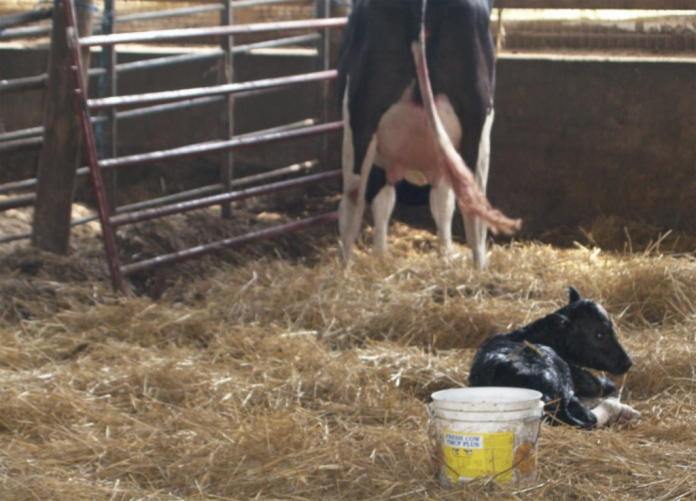Recently, I was working with a farm who occasionally tested their colostrum quality using a refractometer but did not test every cow.
They mostly did a visual score — the visually thicker and darker the colostrum was believed to be good and not tested. This is mostly true but not always the case.
I was recently on a farm consulting on a few calf challenges. A new calf was just born and the cow milked, the colostrum looked great, but we ran it through my refractometer and found a Brix of 9.5%.
High quality colostrum is 22% or higher Brix, and based on work from New York 18% Brix or higher for Jerseys.
Milking
High quality colostrum management starts with milking the cow. The highest quality colostrum available comes from milking the cow within 1-2 hours after calving with a maximum delay of six hours. The concentration of immunoglobulins, IgGs, is highest immediately after calving and decreases over time.
Studies show that when a cow produces more than 18 pounds of milk at the first milking there is less than a 50% chance the colostrum will contain sufficient immunoglobulins.
Be sure to follow proper preparation before milking so that dirt and bacteria on the outside of teats do not end up in the colostrum.
It is important to feed or store colostrum shortly after milking — bacteria levels in colostrum can double every 20 minutes.
Storing
If colostrum cannot be fed immediately, it can be refrigerated for up to 24 hours.
If you are refrigerating bottles, it can be beneficial to cool the bottles in water to lower milk temperature faster and keep the warm milk from raising the temperature of the other products in the fridge.
If colostrum is frozen, it should be done immediately. Place two quarts of colostrum in a gallon zip lock bag and lay flat in the freezer no more than one layer deep for the fastest freezing and best colostrum quality.
To thaw, place the bag in 120 F water and warm up to body temperature of 102-107 degrees slowly to prevent damage to antibodies. Increased thawing temperature to speed up thawing will destroy or inactivate some of the most important antibodies that a calf needs to survive. Only high quality colostrum should be frozen.
Monitor quality
Colostrum quality should be monitored from every cow using either a colostrometer or Brix meter. These measurements are a way to estimate the immunoglobulins, which are the proteins in milk that convey protection against disease in the calf.
These immunoglobulins provide passive transfer of immunity from the cow’s milk to the young calf.
A visual assessment of thickness and yellowish color is another option but is highly inaccurate.
Avoid feeding colostrum that is brown, appears to have blood in it, or a watery consistency.
Colostrometer
A colostrometer is a good way to measure the thickness of colostrum to determine quality, using a glass instrument that floats.
High quality colostrum will float in the green zone containing greater than 50 mg/ml of IGGs, and low quality colostrum floats in the red zone containing 20 mg/ml or less, which is too low to effectively provide passive transfer of immunity to the calf.
Brix meter
The other on-farm measurement technique is to use a Brix meter. The digital meters are more accurate than the manual ones.
High quality colostrum is 22% or higher Brix and based on work from New York 18% Brix for Jerseys. Brix of 11% is considered poor quality colostrum of around 20 mg/ml on a colostrometer.
Calves need to eat 10-12% of their birth weight of colostrum with in the first eight hours of life. The first meal of up to four quarts of colostrum needs fed within the first four hours of birth.
Then two more quarts should be fed between six and eight hours after birth. If four quarts are consumed in during the first four hours, the second feeding should take place before the calf is 12 hours old.
If at all possible, calves should be fed using clean nipple bottles. This may take a little more time and patience than using an esophageal feeder but is very important to the calves future.
If after several minutes a calf will not suckle, an esophageal feeder maybe used to make sure the calf gets enough colostrum.
Proper colostrum management will improve calf health and eventually cow productivity.













